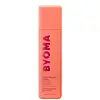What's inside
What's inside
 Key Ingredients
Key Ingredients

 Benefits
Benefits

 Concerns
Concerns

 Ingredients Side-by-side
Ingredients Side-by-side

Water
Skin ConditioningSodium Lactate
BufferingDipropylene Glycol
HumectantGlycerin
HumectantSalix Alba Bark Extract
AstringentLactic Acid
BufferingDiglycerin
Humectant1,2-Hexanediol
Skin ConditioningUrea
BufferingEthylhexylglycerin
Skin ConditioningTocopherol
AntioxidantPolyglyceryl-10 Laurate
Skin ConditioningSodium Phytate
Betula Alba Juice
AstringentMandelic Acid
AntimicrobialBenzaldehyde
MaskingBenzoic Acid
MaskingSphingolipids
EmollientCeramide NP
Skin ConditioningWater
Skin ConditioningGlycolic Acid
BufferingNiacinamide
Smoothing1,2-Hexanediol
Skin ConditioningVaccinium Myrtillus Fruit Extract
Skin ConditioningGlycerin
HumectantSaccharum Officinarum Extract
MoisturisingSodium Hydroxide
BufferingPolyacrylate Crosspolymer-6
Emulsion StabilisingCaprylyl Glycol
EmollientCitrus Aurantium Dulcis Fruit Extract
MaskingCitrus Limon Fruit Extract
MaskingAlthaea Officinalis Root Extract
Skin ConditioningSalicylic Acid
MaskingSodium Levulinate
Skin ConditioningAcer Saccharum Extract
Skin ConditioningPolysorbate 20
EmulsifyingSodium Anisate
AntimicrobialT-Butyl Alcohol
PerfumingParfum
MaskingSodium Hyaluronate
HumectantSodium Benzoate
MaskingCitric Acid
BufferingMicrocitrus Australasica Fruit Extract
Potassium Sorbate
PreservativeCI 17200
Cosmetic ColorantWater, Glycolic Acid, Niacinamide, 1,2-Hexanediol, Vaccinium Myrtillus Fruit Extract, Glycerin, Saccharum Officinarum Extract, Sodium Hydroxide, Polyacrylate Crosspolymer-6, Caprylyl Glycol, Citrus Aurantium Dulcis Fruit Extract, Citrus Limon Fruit Extract, Althaea Officinalis Root Extract, Salicylic Acid, Sodium Levulinate, Acer Saccharum Extract, Polysorbate 20, Sodium Anisate, T-Butyl Alcohol, Parfum, Sodium Hyaluronate, Sodium Benzoate, Citric Acid, Microcitrus Australasica Fruit Extract, Potassium Sorbate, CI 17200
 Reviews
Reviews

Ingredients Explained
These ingredients are found in both products.
Ingredients higher up in an ingredient list are typically present in a larger amount.
1,2-Hexanediol is a synthetic liquid and another multi-functional powerhouse.
It is a:
- Humectant, drawing moisture into the skin
- Emollient, helping to soften skin
- Solvent, dispersing and stabilizing formulas
- Preservative booster, enhancing the antimicrobial activity of other preservatives
Glycerin is already naturally found in your skin. It helps moisturize and protect your skin.
A study from 2016 found glycerin to be more effective as a humectant than AHAs and hyaluronic acid.
As a humectant, it helps the skin stay hydrated by pulling moisture to your skin. The low molecular weight of glycerin allows it to pull moisture into the deeper layers of your skin.
Hydrated skin improves your skin barrier; Your skin barrier helps protect against irritants and bacteria.
Glycerin has also been found to have antimicrobial and antiviral properties. Due to these properties, glycerin is often used in wound and burn treatments.
In cosmetics, glycerin is usually derived from plants such as soybean or palm. However, it can also be sourced from animals, such as tallow or animal fat.
This ingredient is organic, colorless, odorless, and non-toxic.
Glycerin is the name for this ingredient in American English. British English uses Glycerol/Glycerine.
Learn more about GlycerinWater. It's the most common cosmetic ingredient of all. You'll usually see it at the top of ingredient lists, meaning that it makes up the largest part of the product.
So why is it so popular? Water most often acts as a solvent - this means that it helps dissolve other ingredients into the formulation.
You'll also recognize water as that liquid we all need to stay alive. If you see this, drink a glass of water. Stay hydrated!
Learn more about Water